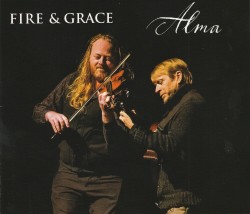Alma - Fire & Grace
 Alma
Alma
Fire & Grace
William Coulter Roaring Girl Records (fireandgracemusic.com)


 Alma
Alma
Fire & Grace
William Coulter Roaring Girl Records (fireandgracemusic.com)
The following review is an excerpt from Strings Attached (February 2022) which can be read in its entirety here.
Alma is the third album of original arrangements by Fire & Grace, the duo of violinist Edwin Huizinga and guitarist William Coulter (Roaring Girl Records fireandgracemusic.com). Coulter’s plectrum guitar is an acoustic steel-string Custom Meridian made by Mike Baranik.
Piazzolla’s Libertango, Albéniz’ Asturias (with violin shredding!) and Vivaldi’s L’Estate – Summer open a fascinating CD, at the heart of which is Suite Español, a continuation of the duo’s project of arranging the solo music of Bach (in this case the Cello Suite No.1) and blending it with folk music, the six Bach movements in this case interspersed with melodies from Spain.
An arrangement of Tanya’s Tune, composed by the former Väsen guitarist Roger Tallroth, completes a hugely entertaining disc.
Thank you for your interest in the Listening Room. Enjoy listening to a selection of recordings we've reviewed by browsing through the carousel of album covers. If you have any techical questions, concerns or comments, please email listeningroom@thewholenote.com.
The Listening Room is a premium offering for recordings that have previously been selected by us for review. For inquries on how to submit your recording for review consideration, please contact David Olds, our DISCoveries Editor at discoveries@thewholenote.com.